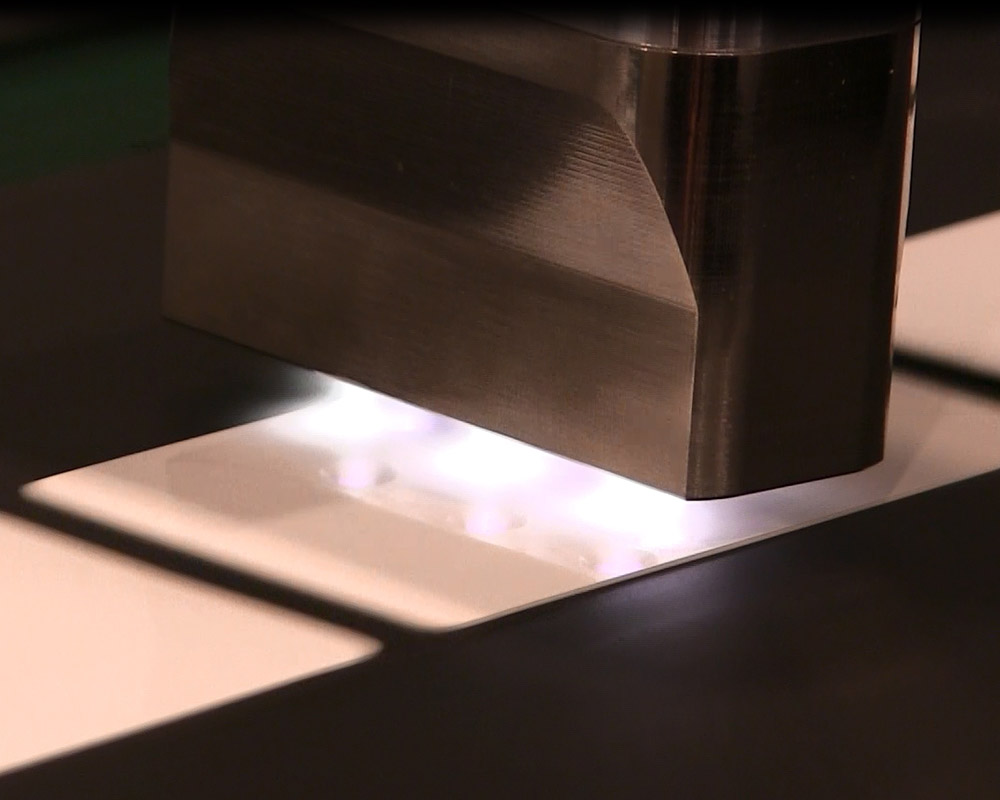Enercon Unveils Plasma & Flame Surface Treating Laboratory to Advance Adhesion Innovation
Enercon proudly announces the opening of its new Surface Treating Laboratory, a cutting-edge facility designed to demonstrate and develop the latest advancements in atmospheric plasma and flame surface treatment. “As the surface treating technology leader, Enercon offers the industry’s greatest variety of Blown-arc™, Blow-ion™ & Multiport™ plasma & flame surface treaters. With this new lab,…
Read MoreChampion Plastics Uses Plasma Treating to Improve Automotive Process
Champion Plastics wins an innovation award for their creative line upgrades in supplying General Motors with a TPV (thermoplastic vulcanisate) seal, for fuel efficiency. Watch the in-line plasma treater in operation.
Read MoreChoosing the Best Surface Treatment Technology: Plasma vs. Flame
Surface treatment technologies, including plasma and flame, play a pivotal role in enhancing adhesion, improving surface energy, and enabling efficient and repeatable manufacturing processes. Choosing between these technologies depends on the materials being treated, application speed, and system integration. In this guide, we’ll break down the key differences, benefits, and practical considerations to help you…
Read MoreWhy Plasma Surface Treatment Is Critical for High-Quality Inkjet & Pad Printing
When it comes to achieving reliable ink adhesion with direct-to-product printing, the secret is on the surface. The printing on your products tells a story, and achieving flawless results requires more than just the right printing equipment and high-quality ink. Surface preparation plays a starring role in bringing those vibrant visions to life. Plasma surface…
Read MoreEverything You Need To Know About Flame Surface Treatment
The Key to Stronger, More Reliable Adhesive Bonds: Flame Treatment One of the most important requirements for adhesion is the condition of the surface prior to bonding with inks, coatings and adhesives. Fortunately, there are technologies which can be used to modify surfaces to make them more receptive to bonding. One of the oldest surface…
Read More5 Mistakes to Avoid When Plasma or Flame Treating Surfaces
When properly implemented, plasma and flame surface treating can improve bonding with adhesives, coatings and inks. However, there are a number of common mistakes made when evaluating and integrating surface treaters that can easily be avoided. In this new webinar, Enercon shares insights on mistakes that can undermine your success: Fill out the form to…
Read MoreNew eBook Offers Technical Insights on using Atmospheric Plasma
Enercon is excited to announce the release of a new eBook: Getting Started with Plasma Surface Treatment. This free eBook provides engineers and manufacturers with a comprehensive guide on how plasma surface treating technology is used to improve bonding for a wide variety of industrial applications. This interactive resource will equip readers with foundational knowledge…
Read MoreNew Plasma & Flame Treater Head Designs Improve Treatment Coverage, Integration and Efficiency
Manufacturers look to Enercon to solve adhesive, ink & coating challenges. Many of these applications require a unique or custom engineered solution. This is where our plasma & flame treating experts work their magic. In this exclusive webinar, we share our most recent groundbreaking surface treater designs that enable plasma & flame to overcome integration…
Read MoreEnercon Releases 2nd Generation of the Blown-ion™ 500 Plasma Surface Treater with an Expanded Operating Window
Enercon’s original Blown-ion™ 500 plasma treater broke new barriers with its ability to provide wide, high and uniform treatment levels at process speeds never before possible with in-line plasma technology. The innovation continues as Enercon releases its second generation of this remarkable technology. “Maintaining a consistent plasma simultaneously over six separate plasma discharge ports requires…
Read MoreEnercon Offers the Widest Range of Surface Treating Technologies at NPE
Get your chance to see the industries’ most comprehensive platform of PLASMA, FLAME & CORONA surface treating technologies in the FRONT ROW of NPE’s West Hall (Booth W6643). (Get your free pass using code 47342.) Object Treating Technologies & Applications Witness plasma treating in action & how it improves surface adhesion on all types of…
Read More










